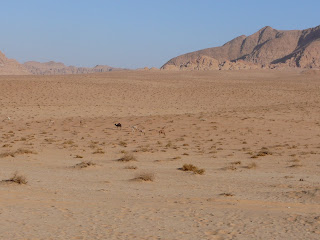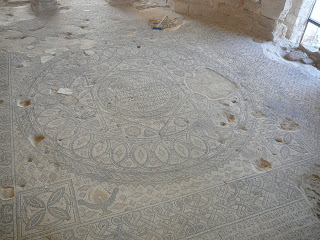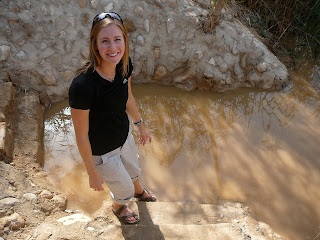







Photos do not do this newly crowned modern 7th wonder of the world justice. Ever since we saw an exhibition in Vancouver featuring the ancient Nabatean civilization and Petra’s rise to power, we have longed to visit and experience this once great city. The ruins did not disappoint. It took 2 days of grueling hiking to see all of Petra’s sights. It is that massive. We arose at 530am our first day in attempt to be the first people at the gate. A little behind schedule, we weren’t the first ones into the site but we still were able to travel through the fantastic Al-Siq (canyon) and catch that first breathtaking and memorable glimpse of the Treasury in tranquil solitude. We continue on through the site past massive ornately carved tombs and a Roman theatre with seats for 7000. A hike up to the Place of High Sacrifice provided stunning panoramic views of the entire site. In ancient past, animals were sacrificed on the alter high above the city and blood collected in a basin below to be used in Nabatean ritual. We followed the trail down the back side of the mountain, past countless tombs and temples before embarking on the 2 km trek up to the Monastery, another breath taking, exquisitely carved tomb chiseled into the side of the mountain. A 12km walk back to our hotel ended this long but unforgettable day. With really really really sore achy muscles we started later the 2nd day and missed the crowded Al-Siq by taking a back route to Petra through an ancient Nabatean tunnel and waterway. Much of the same (hiking and taking in the sights) ensued revealing more and more of Petra’s hidden treasures. With much of the main attractions seen we could pay much more attention to other details namely the magnificent colors of rock that Petra is made of. Although it sounds as though we placed Petra on pedestal tourism has created a dark and sad side to Petra. Unfortunately the tales of animal abuse are true as seen first hand by yours truly. With heavy hearts and teary eyes (Anelia) we had to watch as a uncooperative horse pulling a buggy (as well as a obese driver and obese tourist) was whipped countless times in the belly by a six foot piece of electrical cable. Anelia noticed that the horse was bleeding from its left foreleg which was probably why the horse was acting up. Without pause, the driver beat the horse into submission. In addition to this, Petra was the only sight where we ran into children peddling cheap necklaces and stones to tourists as their parents watched keenly, occasionally barking orders from their kiosks. Although the visitor center has pamphlets discouraging tourists from purchasing from these poor kids, very few tourists take the time to find and read them. As a result the child labor continues unchecked. The final straw leaving a sour taste in our mouths was the amount of animal (camel, donkey, horse) feces on the walkways by the end of the day. The smell and sight was almost unbearable at times!
Like we said ealier, The ruins did not disappoint. Unfortunately, mass tourism has brought problems to Petra, which tarnishes the sight. It was a couple of days filled with highs and lows.
pic 1.b - The street of the Facades and theatre
pic 2 - the back route (waterway) into Petra
pic 3 - the Treasury
pic 4 - Tombs from above (can you spot Jeff?)
pic 5 - the Monastery
pic 6 - First sighting of the Treasury
pic 7 - Al-Siq, the gateway to Petra


























 joined all the other tourists on the shuttle to take us to the site. Most interesting was the explanation of the archeological data and historical references which lead many (including the pope) to believe that John the Baptist baptized Jesus in the area . They even had Anelia and I considering the possibility that this was truly the site of the baptism.
joined all the other tourists on the shuttle to take us to the site. Most interesting was the explanation of the archeological data and historical references which lead many (including the pope) to believe that John the Baptist baptized Jesus in the area . They even had Anelia and I considering the possibility that this was truly the site of the baptism. 


















